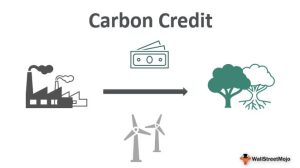Carbon Credit Exchange is Important
The carbon credit market is rapidly expanding as the world’s companies focus on reducing their emissions, and governments consider mandates to lower carbon dioxide levels. In 2027, this market is expected to reach $2.4 trillion, up from $211.5 billion in 2019.
The two main markets for carbon credits are the regulatory markets set by cap-and-trade regulations at regional and state levels and the voluntary markets that businesses participate in on their own accord. The latter is where the carbon credit exchange comes in.
A carbon credit exchange is a trading platform that matches buyers and sellers of carbon credits. While many carbon credit transactions are currently conducted in private conversations and over-the-counter, a growing number are taking place on regulated exchanges. In this environment, there is an increasing need to connect supply and demand through a trusted, reliable platform.
There are many challenges that have impeded the growth of the voluntary carbon market, including the fact that fewer than one-third of global potential supply has been financed or mobilized. To overcome these barriers, the market needs a carbon-credit standard that is clear and transparent. This would ensure that buyers purchase credits that represent genuine emissions reductions. It would also provide credit-suppliers with a consistent means of verifying the quality of their projects and valuing additional attributes (such as community economic development, biodiversity protection, etc.).

Why Carbon Credit Exchange is Important
Currently, the quality of individual credits varies widely because of differences in accounting and verification methodologies, project type and size, and the fact that the additional benefits associated with each project are not standardized. This inconsistency creates a variety of challenges for buyers and suppliers. Buyers face uncertainty about whether they are buying a high-quality credit, and credit-suppliers struggle to attract financing because of the long lead times required for new projects.
There is a solution, however. A new standard developed by Verra, a Washington, D.C.-based non-profit founded in 2007 by environmental and business leaders, would reduce the risks associated with carbon-credit investments. This standard, called a verified emission reduction, or VER, combines accounting methods specific to each project type, independent auditing and a registry system to create a standard that is credible to the market. Its use could reduce the risk for both buyers and sellers of a credit and help the carbon market grow.
Another way to improve the quality of the market is to link carbon-credit assets with a robust, scalable trading infrastructure that can scale as the marketplace grows. This requires a platform that can enable the rapid matching of buyers and sellers with liquid, standardized contracts.
Ideally, this infrastructure will include both spot and futures markets that offer liquidity, price discovery, risk-management services, and data availability. It will also include a standard set of core carbon principles and an attribute taxonomy that allows for the consistent description of additional features of a credit and facilitates the efficient matchmaking process. This approach will build the trust and resilience that is needed to support the growth of the voluntary carbon-credit market, while enabling it to play an important role in helping companies—and the world—achieve ambitious climate goals.



